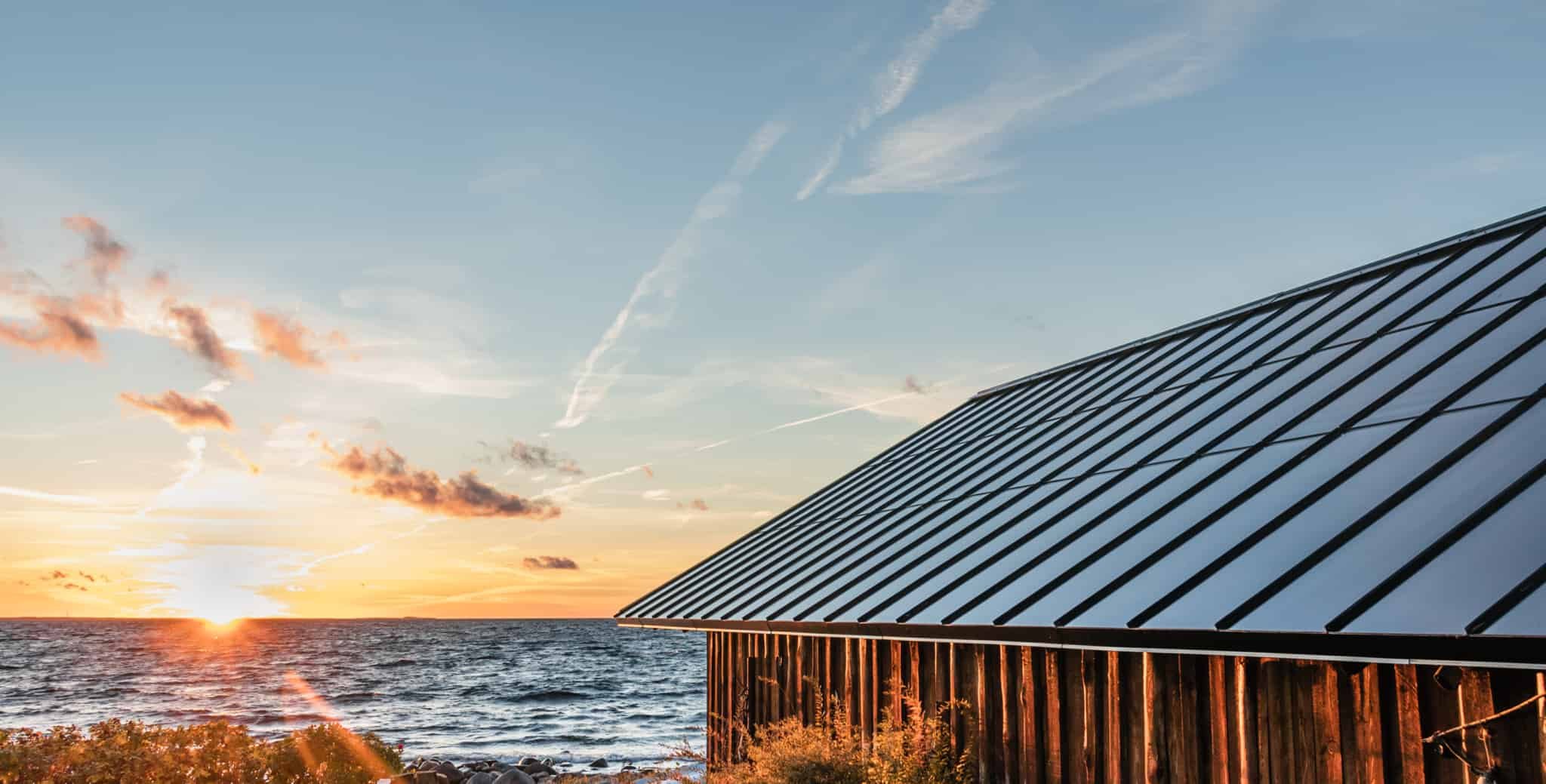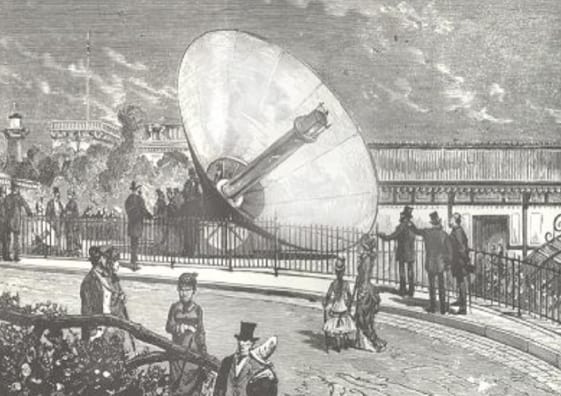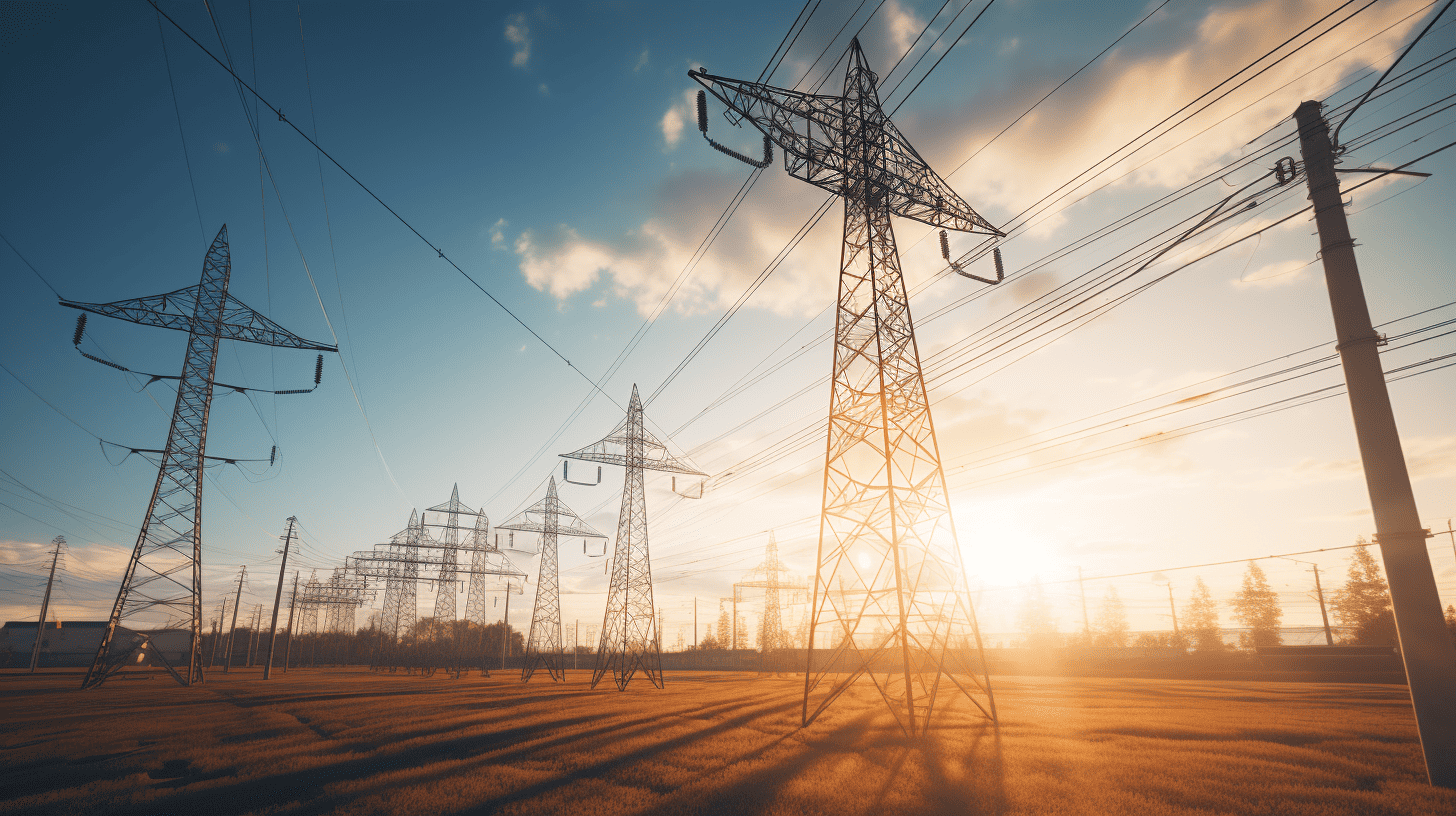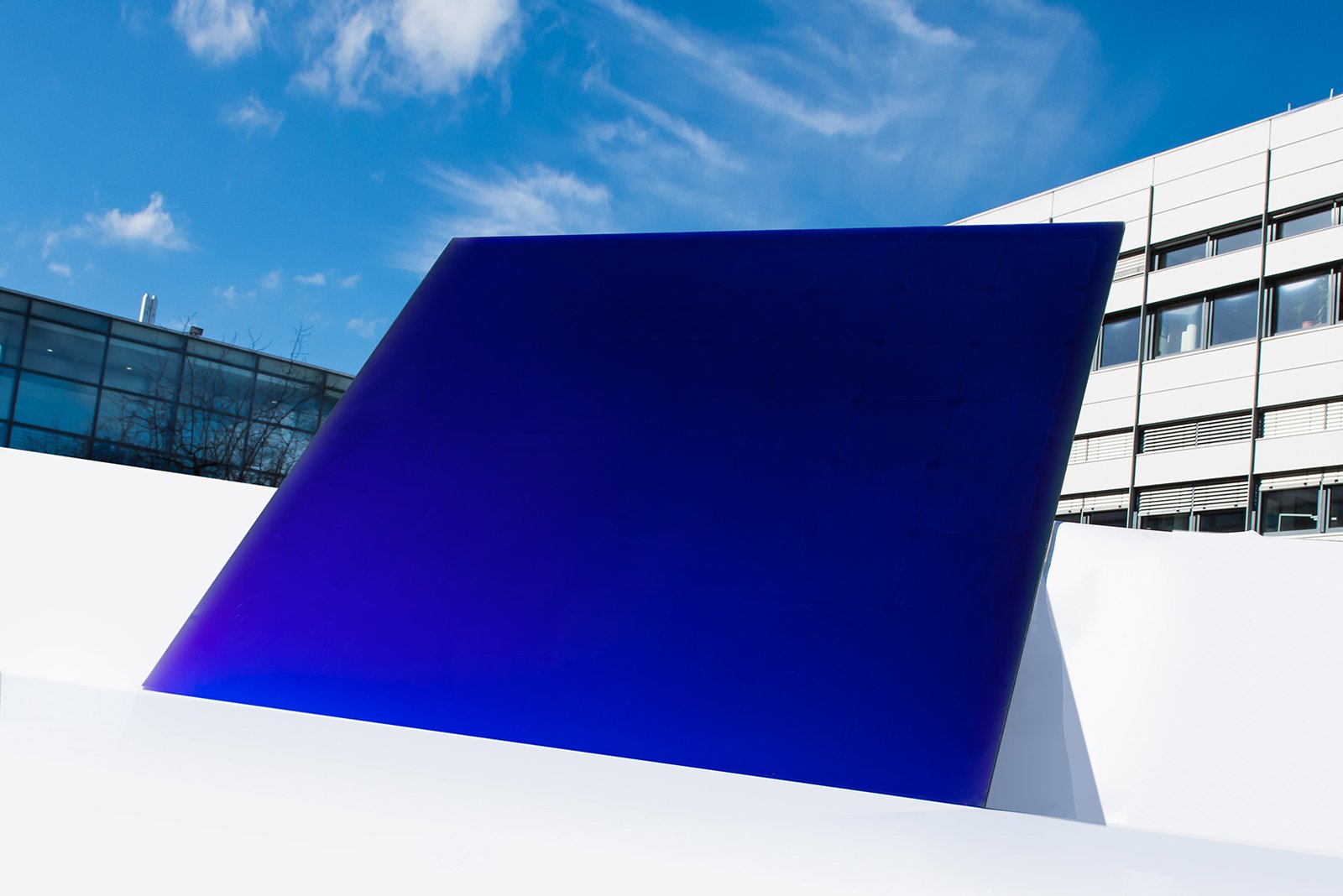
Beautiful they are not. Photovoltaic and solar thermal systems installed on the roofs of houses or lined up in the landscape are not exactly an aesthetically pleasing sight. While solar power has become increasingly commonplace over the past 20 years, the look of the modules has remained the same: shiny black panels with a protective sheet of glass. Underneath lie photovoltaic cells the size of small bathroom tiles, soldered together like a chessboard.
Whether the visual appearance alone deters people from placing such systems on the roofs of their houses is questionable, but in any case it would make sense to equip not only the roofs but also the walls of houses with photovoltaic systems. The expansion of renewable energies is the only way to achieve an energy transition. Researchers say that 2,500 square kilometers of additional photovoltaic systems would be needed. Space is not an issue.
Solar modules can be integrated almost invisibly into façades and roofs
According to the Fraunhofer Society, photovoltaic systems are not very popular among builders and architects as a design element. They are simply “too disruptive.” For this reason, researchers at the Fraunhofer Institute for Solar Energy Systems ISE in Freiburg, Germany, have developed aesthetic, colored modules for designing façades, “which are no longer even recognizable for their actual purpose.”
These colorful components can be produced in any desired color and integrated almost invisibly into a façade or roof. They could even add the finishing touch to modern buildings with a suspended, rear-ventilated façade. “The bright idea for the development was not to color the cover glasses of the modules with color pigments, but rather to mimic the physical effect of the butterfly wing,” says Dr. Thomas Kroyer, head of the Coating Technologies and Systems group. Coated glasses would lose much of their efficiency because the light could no longer penetrate the module unhindered.
The role model: the blue morpho butterfly
The scientists found inspiration for the new solar modules in nature, specifically in the wing of the morpho butterfly. It lives in the tropical rainforests of Central and South America and appears colored not by colored pigments but by an optical effect. The micrometer-fine surface structure of the butterfly’s wing specifically reflects a narrow wavelength range, i.e. it reflects a color. The Fraunhofer ISE experts were able to apply a similar surface structure to the back of the cover glass of their photovoltaic modules using a vacuum process. Depending on the fine structure, glass surfaces in crisp blue, green or red could be produced. “Around 93 percent of the light can penetrate this layer – only around seven percent is reflected and triggers the color effect,” explains Thomas Kroyer. The scientists have named their technology MorphoColor, after the brilliant blue glowing morpho butterfly.
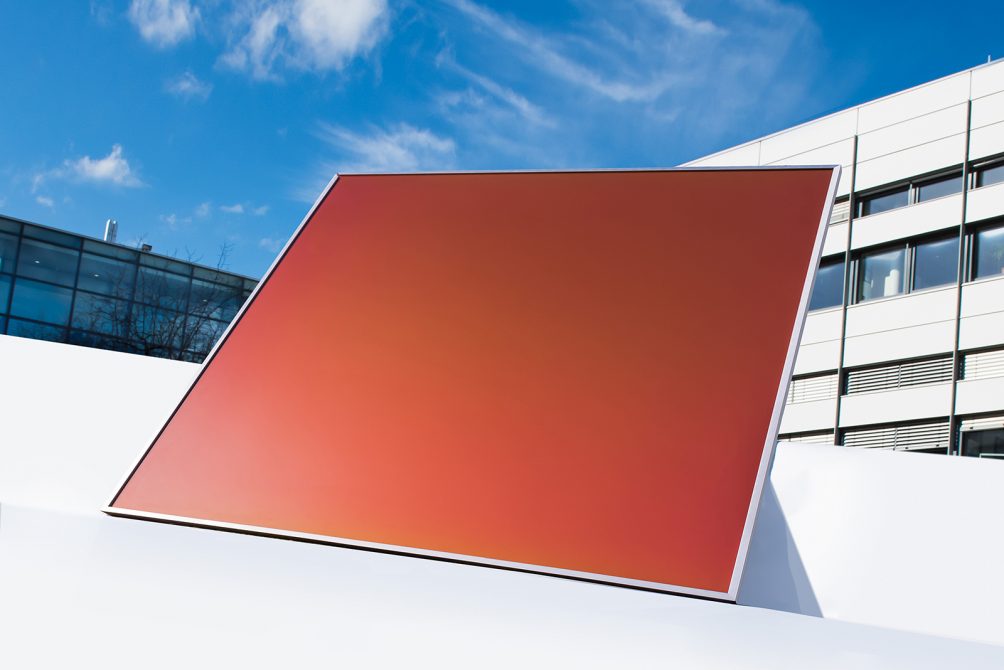
Also read about another morpho-adaptation: Morphotonics
But color alone is not enough to make photovoltaic systems look attractive, the researchers emphasize, and they have found another solution to make them more beautiful. They have developed a mounting method that is reminiscent of the principle of roof shingles. These are laid in an overlapping pattern on top of each other to allow rain to run off. Using the same principle, the Freiburg solar researchers make photovoltaic cells in strips and glue them together to form a larger module so that they overlap by a few millimeters. The result is a homogeneous whole without any disturbing gaps or visible contact wires. There are no photovoltaic cells soldered together like a checkerboard shimmering through the colored cover glass. “You can look at our shingled photovoltaic modules with MorphoColor coating from different angles – and it still looks homogeneous.”
Aesthetic plus-energy house
From January 13 to 15, 2021, the shingled modules will be on display as an exhibit at the BAU online trade show. There will also be a solar thermal collector with MorphoColor coating on display. This is because the glass surfaces, which are vaporized in a vacuum process, can be laminated into photovoltaic modules as well as integrated into a collector for solar heat generation, the scientists emphasize. This is a real benefit, they say, because one production line can serve both products.
“This dual benefit also has its appeal for the end user,” they enthuse. “In the future, photovoltaic and solar thermal modules can be given the same color and mounted virtually invisibly next to each other on the roof or façade.” If you then match the color tone to the rest of the building, a house wall with an absolutely homogeneous exterior can be a façade that supplies electricity and heat at the same time. “This means that the house of the future can become a particularly aesthetic plus-energy house that supplies more energy than it consumes.”
Cover photo: The new photovoltaic modules can be manufactured in the desired color. © Fraunhofer ISE


